1. Goa Maritime Symposium 2024
The Indian Navy is hosting the fifth edition of the Goa Maritime Symposium at Naval War College, Goa.

About Goa Maritime Symposium 2024:
- It is a forum for fostering collaborative thinking, cooperation, and mutual understanding between India and key maritime nations of the Indian Ocean Region.
- Theme: The theme for the event is Common Maritime Security Challenges in the Indian Ocean Region: Progressing Lines of Efforts to Mitigate Dynamic Threats such as illegal and unregulated fishing and other illegal maritime activities.
- It will be participated by the representatives from 12 Indian Ocean Littoral countries- Bangladesh, Comoros, Indonesia, Madagascar, Malaysia, Maldives, Mauritius, Myanmar, Seychelles, Singapore, Sri Lanka and Thailand. Observers from Kenya and Tanzania
Goa Maritime Symposium (GMS)
- It was conceptualised and instituted by the Indian Navy in 2016.
- It is a forum for fostering collaborative thinking, cooperation and mutual understanding between India and key maritime nations of the Indian Ocean Region (IOR).
- The symposium is conducted biennially by the Naval War College (NWC), Goa.
2. Hilsa Fish
Recently, Bangladesh's interim government announced plans to export 3,000 tonnes of hilsa fish to India in time for Durga Puja, which will take place from October 9 to 13.
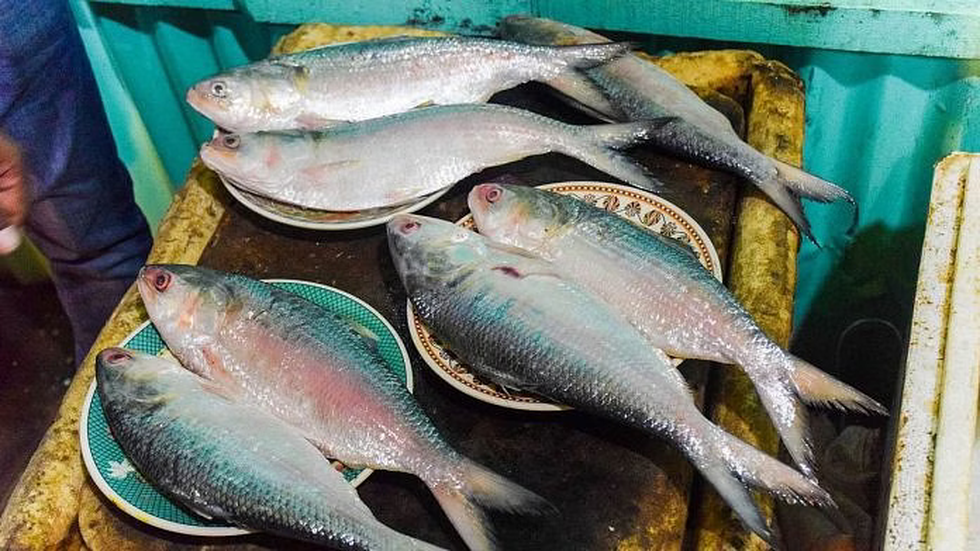
About Hilsa Fish:
- It is a species of fish related to the herring, in the family Clupeidae.
- It is also called Ilish, holds an exceptional position in culinary customs and social practices of Bengal.
- Distribution: It is found in rivers and estuaries in Bangladesh, India, Pakistan, Myanmar (also known as Burma) and the Persian Gulf area.
- It has a history of migrating to Allahabad in the Ganga river system from Bangladesh.
- Though it’s a saltwater fish, it migrates to sweet waters of the Ganges from the Bay of Bengal.
- Hilsa is into breeding migration in three major river systems of the Indo-Gangetic and Brahmaputra river network viz., Ganga, Brahmaputra and Meghna.
- Bangladesh produces around 70% of the world's ilish, making it a subject of public pride. Ilish is also the national fish of Bangladesh.
- The kinds of ilish from rivers like Ganga, Hooghly and Mahanadi are no match when it comes to celebrating important events.
- Conservation status
- IUCN: Least Concern
3. Quad Cancer Moonshot Initiative
Recently, the Quad grouping took a groundbreaking cancer initiative called the Quad Cancer Moonshot Initiative.

About Quad Cancer Moonshot Initiative:
- It was launched by the QUAD countries (India, United States, Australia and Japan).
- It is aimed at implementing innovative strategies to prevent, detect, treat and alleviate the impact of cancer on patients and their families.
- It will focus on expanding cervical cancer screening; increasing vaccinations against the human papillomavirus, or HPV, a common sexually transmitted infection that is the primary cause of cervical cancer; and treating patients.
- India’s contribution
- India will, additionally, offer technical assistance to interested countries in the Indo-Pacific region on DPI for cancer screening, care and continuum through its US $10 million contribution to WHO’s-Global Initiative on Digital Health.
- India commits to providing HPV sampling kits, detection tools and cervical cancer vaccines worth $7.5 million to the Indo-Pacific region.
- India is working on an AI based treatment protocol for the disease.
- India will provide support for radiotherapy treatment and capacity building for cancer prevention in the Indo-Pacific.
- This significant contribution aims to strengthen local efforts to prevent and detect cervical cancer and empower communities with affordable, accessible tools for early detection and prevention, while supporting vaccination programs to reduce the disease burden across the region.
4. Koodiyattom
Cholliyattom is an informal platform for younger generation of Koodiyattom artistes in Kerala following different styles to collaborate and to keep alive various Koodiyattom traditions and styles.
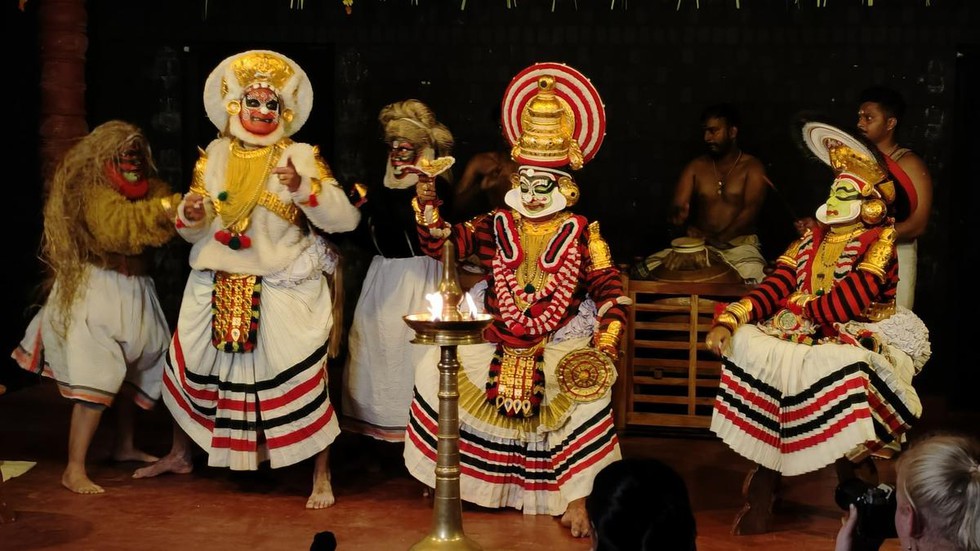
About Koodiyattom:
- It is one of the oldest traditional theatre forms of Kerala and is based on Sanskrit theatre traditions.
- The prefix “kuti” in Malayalam language primarily means “combined” or “together”, and “attam” means “acting”: therefore, the word “kutiyattam or Koodiyattam” means “combined acting.”
- The characters of this theatre form are: Chakyaar or actor, Naambiyaar, the instrumentalists and Naangyaar, those taking on women's roles.
- In its stylized and codified theatrical language, neta abhinaya (eye expression) and hasta abhinaya (the language of gestures) are prominent.
- Pakarnattamis an aspect of Kutiyattam that involves embodying and emoting male and female roles. Switching between the masculine and feminine and interpreting multiple roles at the same time is considered a challenging skill within the repertoire.
- Temple theatres called Kuttambalams are permanent theatre structures attached to some of the major temples of Kerala.
- A striking feature of Kutiyattam is that it treats single Acts from Sanskrit plays as full-fledged plays. It bases its performance not on the full text of a Sanskrit play, but on the individual acts from Sanskrit plays.
- It was recognized as UNESCO Masterpiece of the Oral and Intangible Heritage of Humanity in 2001.
5. Indo-Pacific Economic Framework for Prosperity
Recently, India signed the Indo-Pacific Economic Framework for Prosperity (IPEF) bloc’s agreements on a clean and fair economy.

About Indo-Pacific Economic Framework for Prosperity:
- It is a regional arrangement to build cooperation and economic integration in the Indo-Pacific region. It was launched in May 2022.
- It is intended to advance resilience, sustainability, inclusiveness, economic growth, fairness and competitiveness for member economies.
- It will seek to complement and build on existing regional architecture and support the global rules-based trading system.
- Member countries:It has 14 regional partners – Australia, Brunei, Fiji, India, Indonesia, Japan, the Republic of Korea, Malaysia, New Zealand, the Philippines, Singapore, Thailand, the United States and Vietnam.
- The economic framework broadly rests on four pillars:Trade, Supply chain resilience, Clean Energy, Decarbonization, and Infrastructure Taxes and anti-corruption measures
- The IPEF is not a Free Trade Agreement(FTA), but it allows members to negotiate the parts they want to.
- India and IPEF:
- India has been actively participating in the IPEF, but not in all pillars.
- India has decided to opt out of the trade pillar of the IPEF as most issues promoted by the IPEF do not align with India's trade policies.
- India ratified the agreement on supply chain resilience (Pillar II) in February 2024 and has maintained an observer status in the Pillar-I.
- India signed and exchanged the first-of-its-kind agreements focused on Clean Economy (Pillar III), Fair Economy (Pillar IV).
- The agreement on clean economy intends to accelerate efforts of IPEF partners towards energy security, GHG (greenhouse gas) emissions mitigation, developing innovative ways of reducing dependence on fossil fuel energy and promoting technical cooperation.
6. Key Facts about Greater One-Horned Rhino
Kaziranga and other protected habitats of the one-horned rhinoceros in Assam recorded an 86% drop in poaching of the herbivore since 2016, the Chief Minister said recently.

About Greater One-Horned Rhino:
- The greater one-horned rhino, also known as Indian rhinoceros, is the largest of the three Asian rhinos and, together with African white rhinos, is the largest of all rhino species.
- Scientific Name: Rhinoceros unicornis
- Distribution:
- It can be found in India and Nepal, particularly in the foothills of the Himalayas.
- In the past, Greater one-horned rhinos roamed freely in the floodplains and forests alongside the Brahmaputra, Ganges, and Indus River valley.
- Kaziranga National Park in Assam, India, contains the largest population (2,401).
- Habitat: Greater one-horned rhinos are semi-aquaticand often take up residence in swamps, forests, riversides, and anywhere that is near nutritious mineral licks.
- Features:
- The largest of the Asian rhinos, male Indian rhinos weigh approximately 2,200 kg (nearly 4,840 pounds) and range in height from 170 to 186 cm (67 to 73 inches) and are 368 to 380 cm (145 to 150 inches) long.
- It is identified by a single black horn about 8-25 inches long and a grey-brown hide with skin folds, which gives it an armor-plated appearance.
- The species is solitary, except for females with small calves. Males maintain loosely defended territories.
- The rhino is primarily a grazer. Its diet consists almost entirely of grasses, but it also eats leaves, branches, fruit, and aquatic plants.
- Conservation Status:
- IUCN Red List: Vulnerable
7. What is Project 200?
Bengaluru-based space startup Bellatrix Aerospace recently unveiled Project 200 on the inaugural day of the Bengaluru Space Expo 2024.
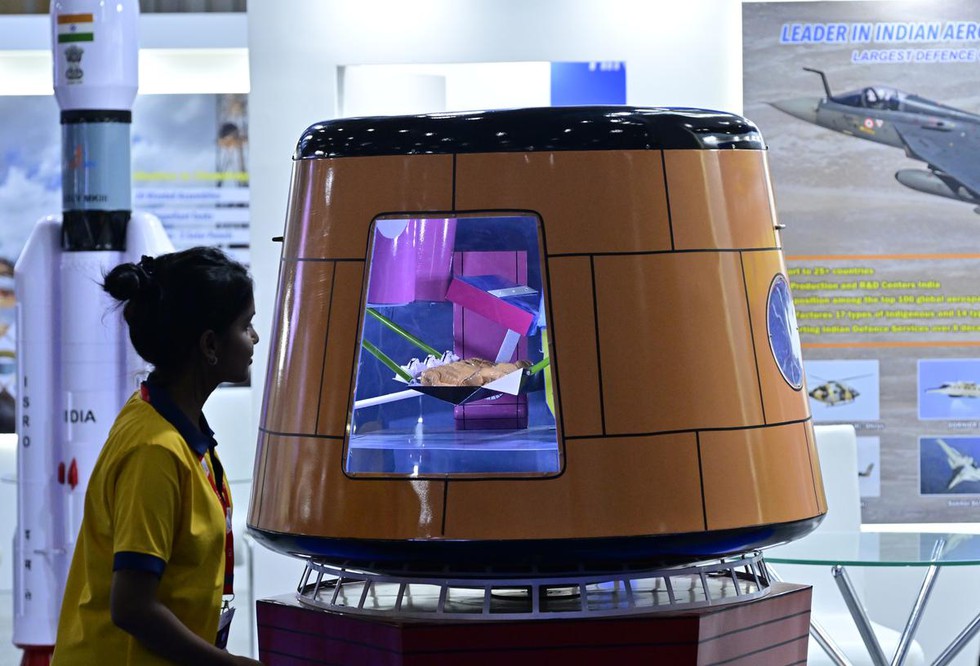
About Project 200:
- It is an innovative satellite designed to operate at an Ultra-Low Earth Orbit (180 km-250 km).
- It was developed by Bellatrix Aerospace, a Bengaluru-based space startup.
- Traditionally, satellites have been deployed in orbits at altitudes well above 450 km.
- This altitude choice has been influenced by various considerations, such as the desire to minimise the impact of atmospheric interference on satellite operations.
- Though it is known that a satellite’s capabilities improve significantly at 200 km, limitations on propulsion technology have prevented satellites from operating at this orbit.
- Project 200 is a technology demonstration mission to qualify a new unconventional satellite powered by an innovative propulsion system (developed in-house) at around 200 km.
- Bellatrix Aerospace stated that their cutting-edge propulsion technology enables satellites to maintain 200 km orbits for years, rather than deorbiting in a few days.
- According to Bellatrix, at 200 km, a satellite’s capability would improve significantly since the communication latency is reduced by half and image resolution is improved by three times.
- The cost of the satellite is also less when compared to spacecraft placed in 450 km orbits.
8. What is Pashmina Shawl?
The Prime Minister recently gifted a Delhi-Delaware silver train model to US President Joe Biden and a pashmina shawl to First Lady Jill Biden during his three-day US visit for the Quad Summit.
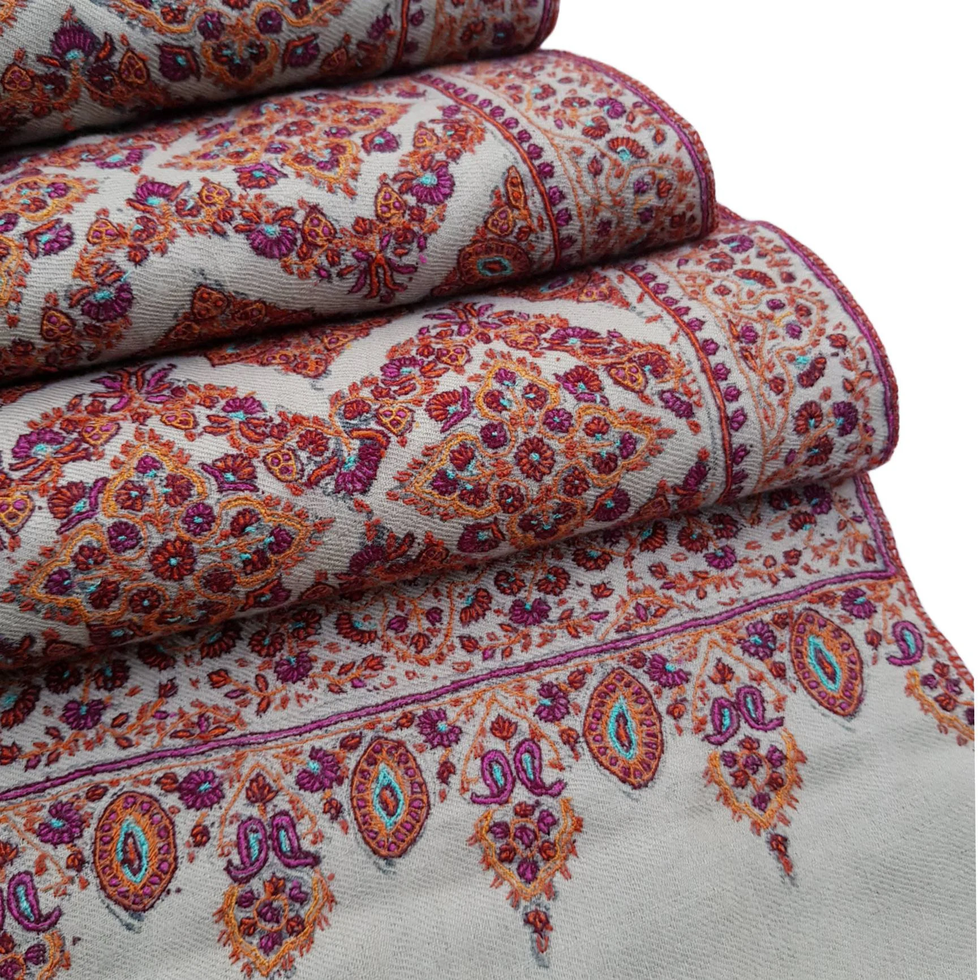
About Pashmina Shawl:
- Originating from Kashmir, these shawls are known for their exceptional craftsmanship and the use of fine Ladakhi Cashmere wool.
- The word "Pashmina" is derived from the Persian word "Pashm," which means "soft gold" or "soft wool."
- A cashmere wool itself is obtained from the undercoat of the Changthangi goat (Capra aegagrus hircus), also known as the Pashmina goat, which is native to the high altitudes of the Himalayas in regions like Ladakh in India, Nepal, and Tibet.
- These goats develop a unique undercoat to withstand the harsh winters, and it is this undercoat that is meticulously collected to create Pashmina shawls.
- Kashmir’s Pashmina has earned G.I certification or G.I Tag due to the unique traditional process used by local artisans in the Kashmir valley.
- Process:
- Cashmere wool, known for its exceptional fineness and warmth, is spun into yarn using traditional spinning wheels, a practice that has been passed down through generations.
- Once the yarn is ready, skilled artisans begin the intricate process of weaving, either by handloom or traditional wooden looms.
- Each shawl is meticulously crafted, with patterns ranging from delicate floral motifs to intricate paisley designs, reflecting the rich cultural heritage of Kashmir.
- The weaving process can take weeks or even months to complete, depending on the complexity of the design and the skill of the artisan.
- Natural dyes from plants and minerals in the region decorate the shawl with captivating colours.
Source : PM Modi gifts antique silver train model to President Biden and pashmina shawl to First Lady
9. What is Staphylococcus aureus (S. aureus)?
Antimicrobial resistance is one of the great crises of the 21st century, and Staphylococcus aureus is an important bacteria species leading this charge.
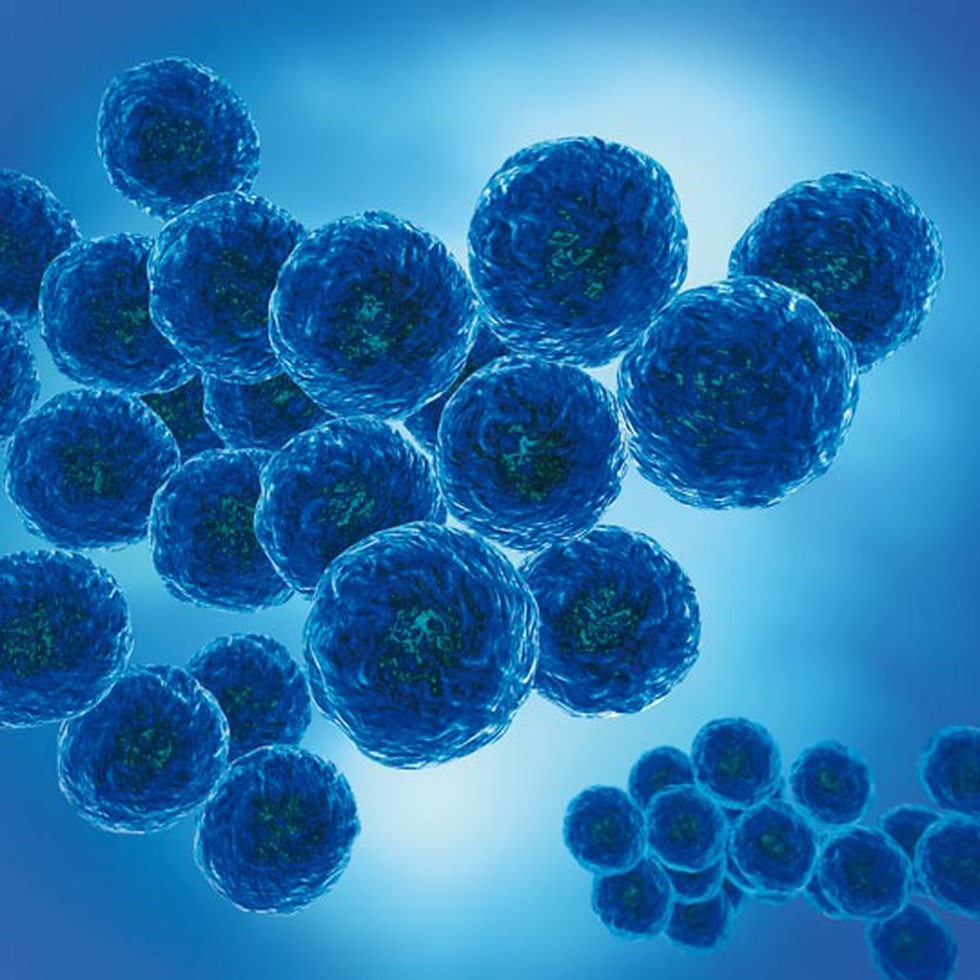
About Staphylococcus aureus (S. aureus):
- It is a type of gram-positive, sphere-shaped (coccal) bacteria.
- aureus may occur commonly in the environment. It is commonly found on the skin and in the nose of about 30% of individuals.
- Most of the time, aureus does not cause any harm, but it can sometimes cause infections.
- Skin infections are common, but the bacteria can spread through the bloodstream and infect distant organs, particularly heart valves (endocarditis) and bones (osteomyelitis).
- Skin infections may cause blisters, abscesses, and redness and swelling in the infected area.
- Transmission:
-
- These bacteria are spread by having direct contact with an infected person, by using a contaminated object, or by inhaling infected droplets dispersed by sneezing or coughing.
- Further, due to its ability to affect a wide range of species, S. aureus can be readily transmitted from one species to another. This includes transmission between humans and animals.
- Treatment:
- Treatment usually involves antibiotics and cleaning of the infected area.
- Some types of S. aureus are resistant to common antibiotic treatments.
10. Key Facts about Lebanon
The United Nations Security Council met in emergency session recently following Israeli strikes on the Lebanese capital Beirut and in the south, which have left at least a dozen dead.
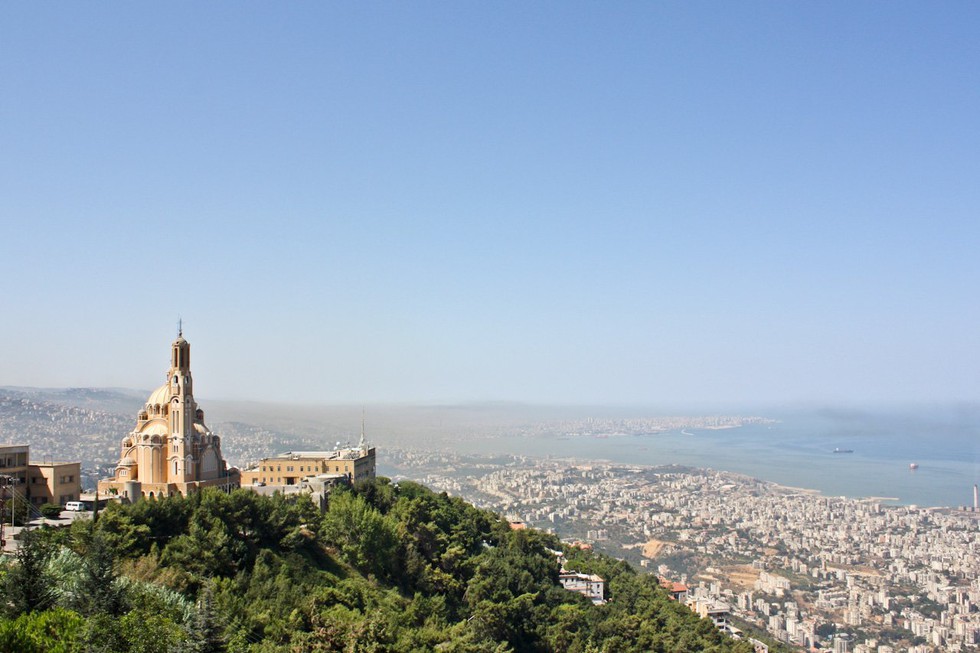
About Lebanon:
- It is a country located on the eastern shore of the Mediterranean Sea in Western Asia.
- Capital: Beirut
- Borders: It borders the Mediterranean Sea in the west, Syria in the north and east, and Israel in the south.
- History:
- It is part of an area known as the Fertile Crescent, also known as the “Cradle of Civilization”.
- Byblos, the oldest continuously inhabited city in the world, is around 30 km north of modern Beirut.
- Lebanon was ruled by a number of ancient empires, including the Phoenician, Egyptian, Hittite, Babylonian, Persian, Greek, and Roman.
- For over 400 years (1516-1918), Lebanon was part of the Ottoman Empire.
- In 1920, following the collapse of the Ottoman Empire, Lebanon was ruled by France, which created the State of Greater Lebanon.
- It wasn’t until 1943 that Lebanon achieved independenceafter French authority dissolved, leading to the withdrawal of French troops.
- Geography:
- It consists of a narrow strip of territory and is one of the world’s smaller sovereign states.
- The Lebanon Mountains, which rise to 9,800 feet (3,000 meters), run down the middle of the country.
- The Anti-Lebanon Mountains form Lebanon’s border with Syria.
- Between the two mountain ranges lies the high, fertile Bekaa Valley.
- The valley receives water from the Litani, the only river in Lebanon that flows throughout the year.
- Climate: Its Mediterranean climate brings mild, wet winters and hot, dry summers.
- Political Structure:
- Lebanon is a unitary, multiparty republic with a parliamentary system of government.
- Parliamentary seats are apportioned equally between Christian and Muslim This sectarian distribution is also to be observed in appointments to public office.
- Languages: Arabic (official), French, English, Armenian
- People: Most Lebanese are Arabs. There are small groups of Armenians and Kurds.
- Economy: Services, including banking and tourism, are Lebanon’s most important economic activities.


























































































































































.png)
.png)
.png)
.png)
.png)


.png)
.png)
.png)





.png)
.png)






.png)
.png)
.png)
.png)
.png)
.png)
.png)
.png)
.png)

.png)







.png)
.png)


.png)
.png)
.png)


.png)

.png)
.png)





.jpg)

.png)
.png)


.png)

.png)
.png)
.png)

.jpg)

.jpg)


.png)

.png)
.png)
.png)
.png)
.png)
.png)
.png)
.png)
.png)
.png)




.png)

.png)





.png)
.png)
.png)
.png)
.png)
.png)
.png)
.png)
.png)
.png)
.jpg)
.jpg)

.png)
.png)
.png)
.png)
.png)
.png)
.png)
.png)
.png)
.png)
.png)
.png)
.png)
.png)
.png)
.png)
.png)
.png)
.png)
.png)
.png)
.png)



.png)
.png)

.jpg)
.jpg)


.jpg)
.jpg)
.jpg)
.jpg)
.jpg)

.jpg)








.jpg)
.jpg)
.jpg)
.jpg)
.jpg)

















.jpg)
.jpg)







.jpg)


















.jpg)
.jpg)






























































































.jpg)
.jpg)


























.jpg)

.jpg)










.jpg)








.jpg)




.jpg)










.jpg)


















.jpg)












































.jpg)














.jpg)
.jpg)
.jpg)





.jpg)

.jpg)
.jpg)





































































.jpg)


































.jpg)
.jpg)
















































.jpg)












.jpg)


.jpg)




.jpg)
.jpg)
.jpg)

.jpg)
.jpg)
.jpg)
.jpg)

.jpg)
.jpg)
.jpg)

.jpg)
.jpg)
.jpg)
.jpg)
.jpg)
.jpg)
.jpg)
.jpg)

.jpg)


.jpg)
.jpg)
.jpg)
.jpg)
.jpg)
.jpg)
.jpg)
.jpg)
.jpg)
.jpg)











.jpg)
.jpg)





.jpg)
.jpg)
.jpg)
























.jpg)
























.jpg)









.jpg)
.jpg)







.jpg)
.jpg)









































.jpg)
.jpg)
.jpg)
.jpg)
.jpg)

.jpg)
.jpg)
.jpg)
.jpg)
.jpg)


.jpg)
.jpg)
.jpg)
.jpg)
.jpg)

.jpg)
.jpg)
.jpg)
.jpg)
.jpg)
.jpg)
.jpg)
.jpg)
.jpg)
.jpg)
.png)

.png)
.png)

.png)
.png)
.png)
.png)


.jpg)
.jpg)

.jpg)
.jpg)
.jpg)

.png)
.png)
.png)
.png)
.png)
.png)
.png)

.png)
.png)
.png)
.png)
.png)
.png)
.png)
.png)
.png)
.png)





































































-min.png)



.png)




.png)








































